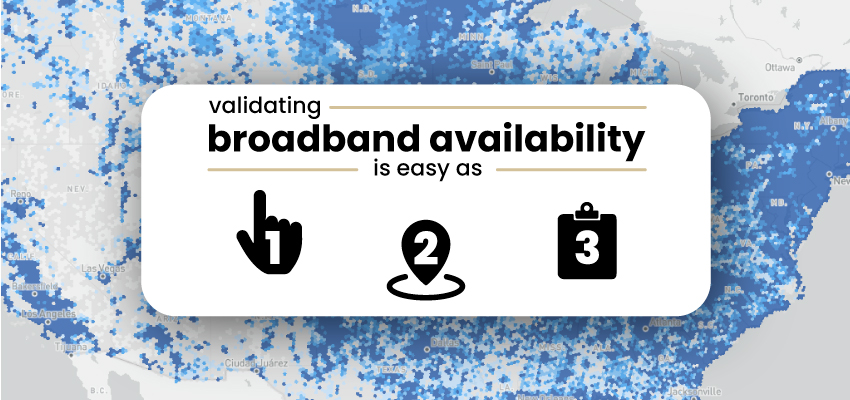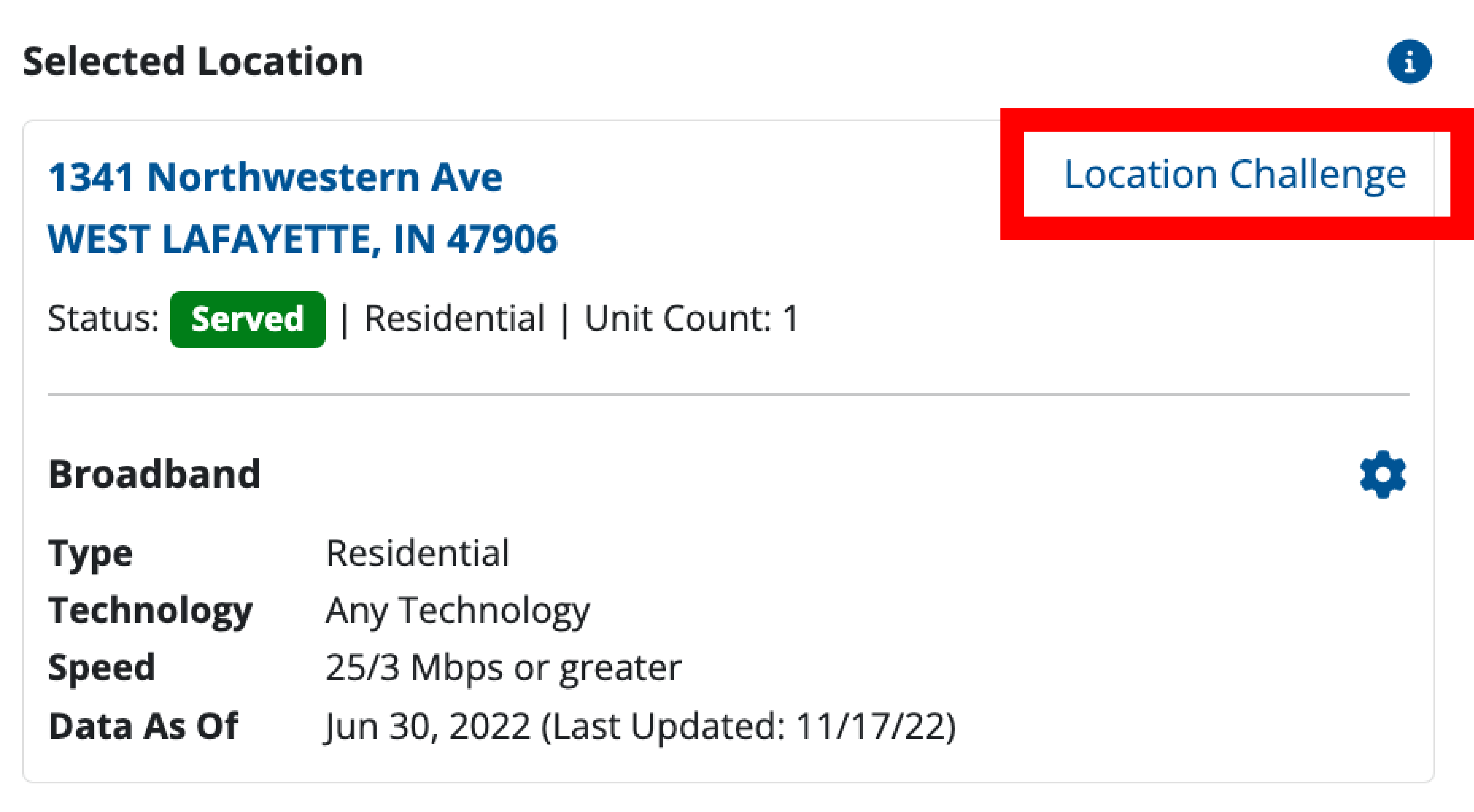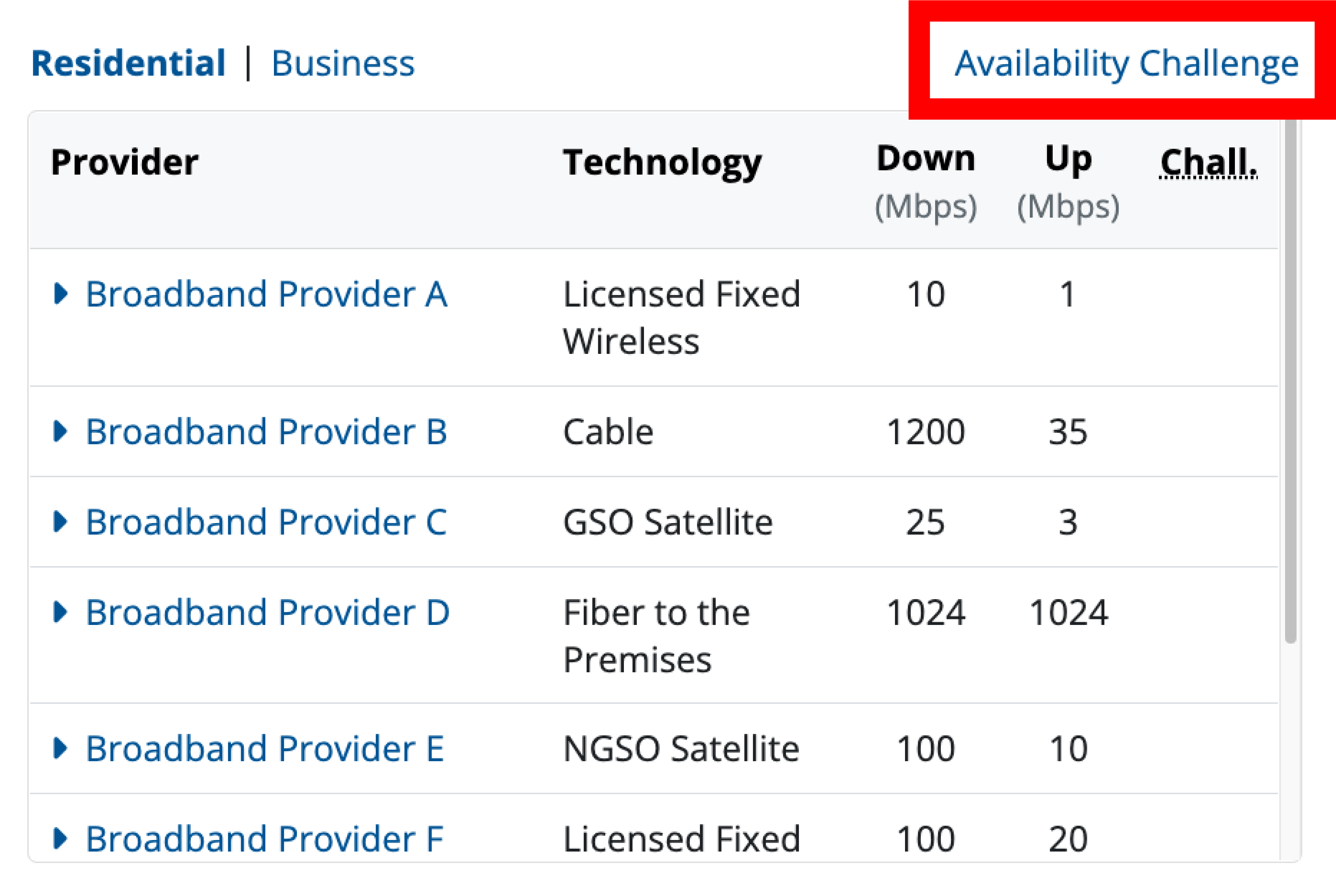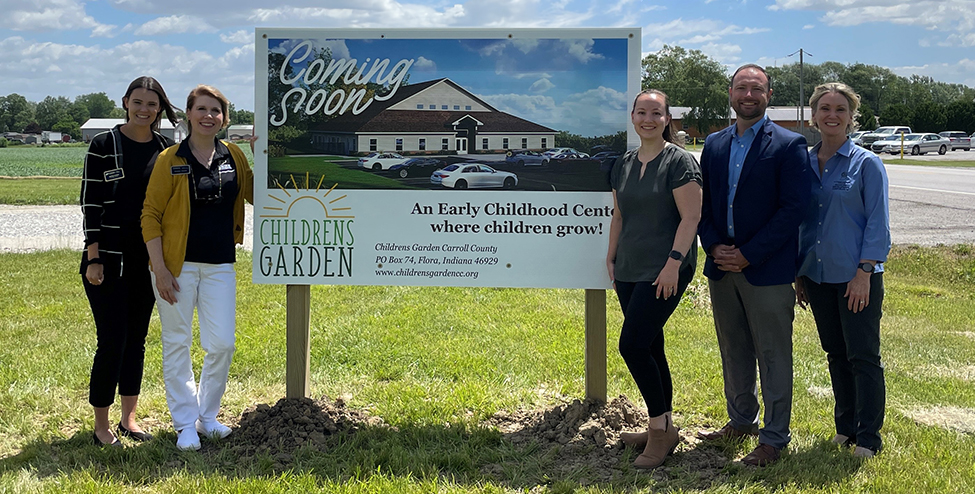3 Steps to Bring Better Broadband to Indiana

Your community needs your help! Recently, the Federal Communications Commission (FCC) released a map showing broadband availability across the U.S. The National Telecommunications and Information Administration (NTIA) will use this map to guide the distribution of funding for building broadband infrastructure through programs such as the $42.5 billion Broadband Equity, Access, and Deployment (BEAD) program. To make sure that the funding reaches the areas that need broadband most, residents and businesses are being asked to look at the map and verify the information is correct. To do this, follow these three steps:
Visit broadbandmap.fcc.gov
and type in your address
When you first visit the website, there is a large box in the center of the page. Input your address into this box and hit enter. You will be redirected to a map showing the location of the address you entered with the location and broadband service information in a sidebar on the right.

Verify your address’s location
If it’s wrong, submit a Location Challenge
Once you have been redirected, take a look at the map and make sure it accurately reflects the address you entered. If the dot does not reflect the actual location of the address you entered, whether it’s in the wrong place or missing entirely, then you need to submit a Location challenge. To submit a location challenge, click on “Location Challenge” in the top right corner of the top box in the right side bar. Here is a step by step guide by the FCC on how to submit a location challenge.

Validate your available broadband
If it’s wrong, submit an Availability Challenge
If your location information is correct, then direct your attention to the second box on the right side of the screen. This box lists the providers and their available services for your location. Make sure this box reflects your experience and knowledge. If it does not, you can submit an availability challenge by selecting “Availability Challenge” above the right corner of that box. The video below walks you through the steps of submitting an availability challenge.

Through taking these three steps, you can do your part in getting funding to where broadband infrastructure is needed most.
Still looking for more information? We got you covered with these FAQs.
What is this map?
This map is a compilation of data on broadband infrastructure to measure broadband availability across the U.S. The map was put together by CostQuest, the Federal Communications Commission (FCC), and Internet Service Providers (ISPs).
How is this map different from previous broadband maps?
While this map is similar to previous broadband availability maps put out by the FCC, there are important differences. Previous maps used Census blocks–the most granular geographic areas for which the Census compiles demographic information. Multiple addresses are included in Census blocks and if one address is served in that Census block, then addresses in the entire block are considered served. This new map uses address-level data, which provides a more accurate look at broadband availability. This map also offers a way to verify the data through the challenge process.
Why is this important?
This map is intended to inform broadband infrastructure funding and eligibility, specifically for BEAD funding. BEAD funding is a historic investment by the federal government for broadband infrastructure.
Who should verify and validate the data?
The short answer is everyone. But people who are currently unsatisfied, whether with the availability of service or the quality of service, should especially take the steps listed above. The more individuals that participate, the more input the FCC has to create an accurate and reliable tool to direct funding.
How else can I help?
If you have entered your address and verified or challenged the information but are still looking for ways to help bring broadband to your area, then good news. You can help by spreading the word about this map and encouraging others to go through this process. If you want to help even more, then offer a lending hand to your technologically-challenged community members. Help walk them through the steps above so their information can be verified and collected.
Should I validate Fixed broadband or Mobile broadband?
Both – if you can! When you go to your address, you will see that in the sidebar on the right you can toggle between Fixed broadband and Mobile broadband. The Fixed broadband shows the availability and speed of fiber, cable, DSL, satellite, or fixed wireless internet at the locations on the map. Mobile broadband shows the coverage of mobile networks at 3G, 4G or 5G at the locations on the map.
What happens after I submit a challenge?
It depends on the challenge you submit. The FCC has published articles on their help center on what to expect after filing a Location Challenge, an Availability Challenge, and a Mobile Challenge. Follow the hyperlink of the challenge you submitted to see the article.
What do the colored dots mean?
The colored dots represent data points from the Broadband Serviceable Location Fabric (Fabric) dataset. Their location represents buildings or structures where internet services are or could be. These are places such as homes, apartments, farmsteads, or small businesses. The color of the dot represents the coverage of that location.
Green dots are locations that have coverage as reported by ISPs with a minimum broadband service of 25 Megabits per second (Mbps) download and 3 Mbps upload (25/3).
Red dots are locations that do not have 25/3 Mbps coverage. However, if ISPs are reporting this minimum speed and your address is green but you experience slower speeds consistently or your service is very unreliable, submit an availability challenge.
Gray dots are locations that are likely to subscribe to enterprise or commercial-grade broadband service.
Purple dots indicate that you switched the map from fixed broadband to mobile broadband.
What is BEAD?
BEAD stands for the Broadband Equity, Access, and Deployment Program. The BEAD program’s ultimate goal is to expand high-speed internet access by providing $42.45 billion in funding. Learn more about this program at https://broadbandusa.ntia.doc.gov/broadband-equity-access-and-deployment-bead-program.
What if both my location and broadband availability are wrong? Do I need to submit two challenges?
Yes, you need to submit both.
Still looking for more information? Here are some additional resources to check out:

Cheyanne Geideman is a Senior Engagement Specialist at the Purdue Center for Regional Development. She holds a B.S. in Visual Communications Design from Purdue University... read more




